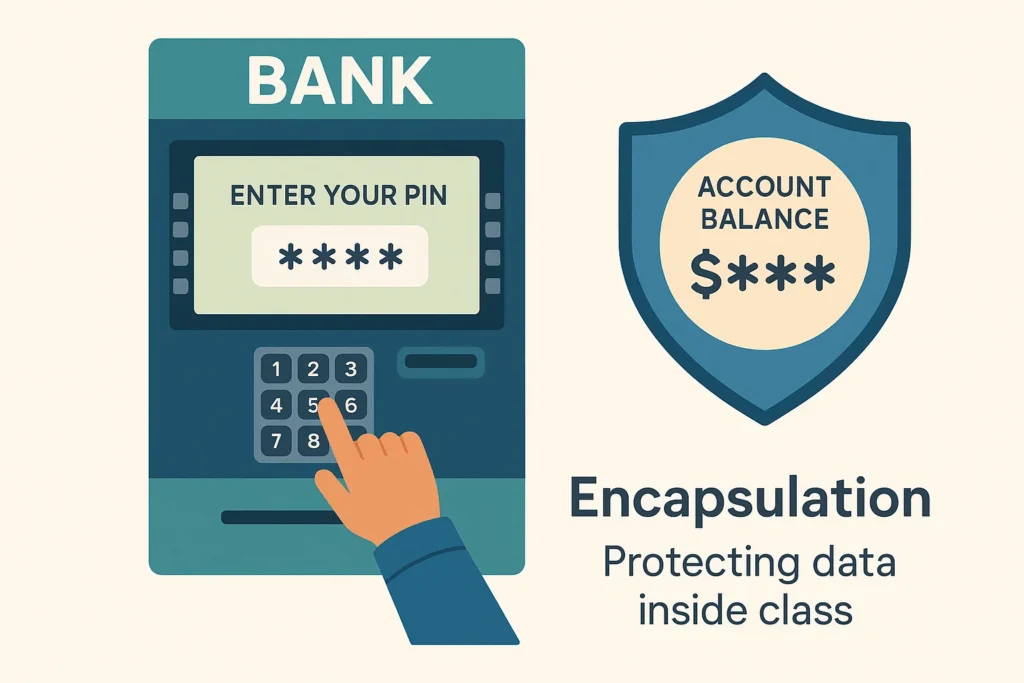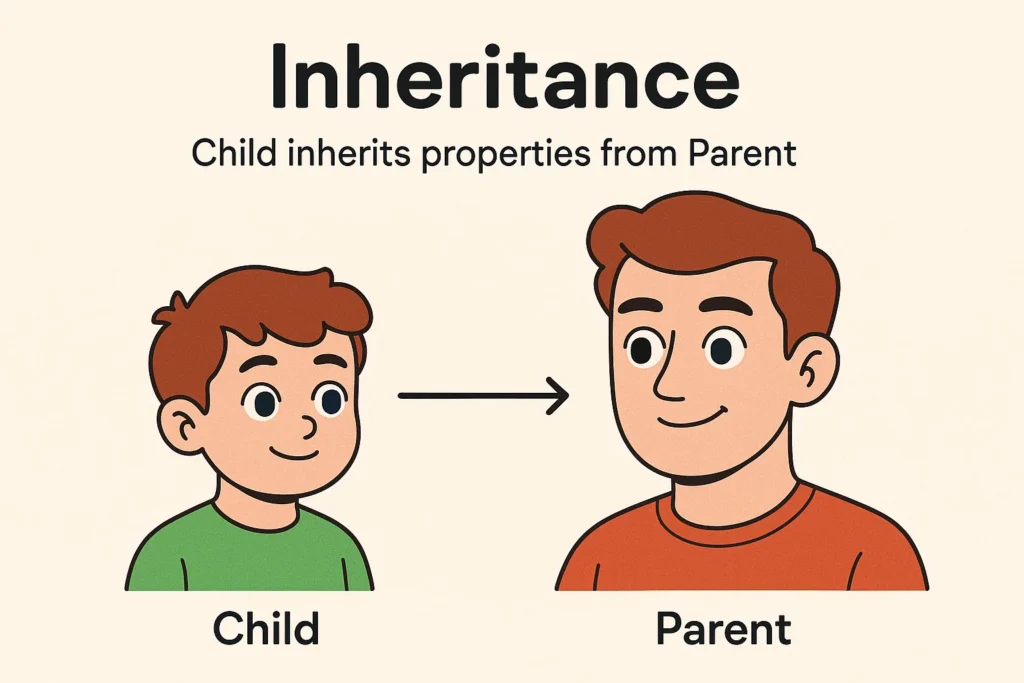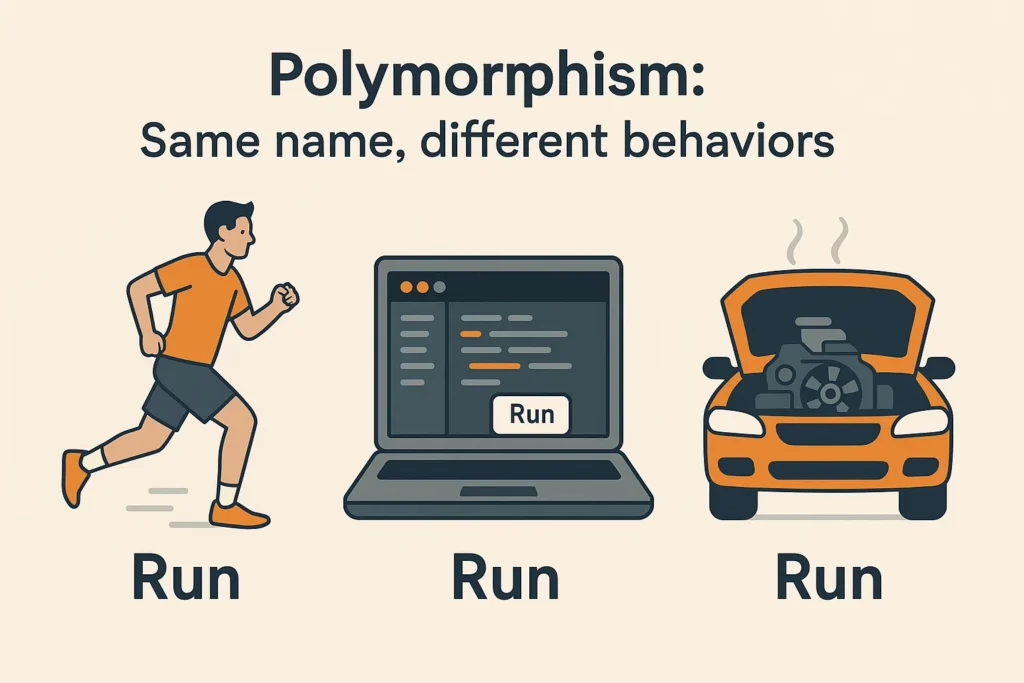
In today’s world, Object-Oriented Programming System (OOPS) is used almost everywhere — whether it’s making a mobile app, website, game, or big software. But many students and beginners get confused with technical words like “Class”, “Object”, “Inheritance”, etc.
What is OOPS?
Imagine you are running a school.
The school has many classes (like Class 1, Class 2, Class 3…).
Each class has many students.
Every student has details like name, age, roll number, etc.
Now in OOPS language:
The School is like a full program.
Each Class (like Class 1, Class 2) is a Class in programming.
Each Student is an Object created from that Class.
In simple words:
Class is a blueprint.
Object is a real thing created from that blueprint.
🔎 Main Types of OOPS Concepts
Now let’s understand all types one-by-one, with easy real-life examples:
1️⃣ Class
🔥 Real Life Example:
Think of a “Car Company” like Maruti or Honda. They make different models of cars.
The design plan for the car (blueprint) is called the Class.
Every individual car made from that plan is called an Object.
So:
Class = Blueprint
Object = Actual Car
✅ Code Example:
class Car:
def __init__(self, color, model):
self.color = color
self.model = model
def drive(self):
print(f"{self.model} is driving")
2️⃣ Object
🔥 Real Life Example:
Suppose you made two cars from that blueprint:
Car 1: Red Honda
Car 2: Blue Maruti
Both are Objects of the same class Car.
✅ Code Example:
car1 = Car("Red", "Honda City")
car2 = Car("Blue", "Maruti Swift")
car1.drive()
car2.drive()

3️⃣ Encapsulation
Encapsulation means hiding private data inside the class so nobody from outside can change it directly.
🔥 Real Life Example:
Think of a Bank Account. You can deposit or withdraw money through ATM (public methods), but you cannot directly change your bank balance (private data).
✅ Code Example:
class BankAccount:
def __init__(self, balance):
self.__balance = balance # private data
def deposit(self, amount):
self.__balance += amount
def get_balance(self):
return self.__balance
4️⃣ Abstraction
Abstraction means showing only important things and hiding the unnecessary details.
🔥 Real Life Example:
When you use a smartphone, you simply touch the screen to make calls or open apps. You don’t know how internally the circuits work. That’s abstraction.
✅ Code Example:
from abc import ABC, abstractmethod
class Phone(ABC):
@abstractmethod
def call(self):
pass
class Android(Phone):
def call(self):
print("Calling using Android phone")
5️⃣ Inheritance

Inheritance means one class takes features from another class.
🔥 Real Life Example:
Your parents have some qualities like eye color, hair color. You inherit these from them.
Parent Class = Father/Mother
Child Class = You
✅ Code Example:
class Parent:
def speak(self):
print("Parent is speaking")
class Child(Parent):
def play(self):
print("Child is playing")
obj = Child()
obj.speak()
obj.play()
6️⃣ Polymorphism
Polymorphism means same thing doing different jobs depending on where it is used.
🔥 Real Life Example:
The word “run”:
A man runs on road.
A computer program runs.
A car engine runs.
Same word, different jobs.
✅ Code Example:
class Bird:
def sound(self):
print("Chirp Chirp")
class Dog:
def sound(self):
print("Bark Bark")
def make_sound(animal):
animal.sound()
b = Bird()
d = Dog()
make_sound(b)
make_sound(d)

7️⃣ Composition (HAS-A Relationship)
One object contains another object.
🔥 Real Life Example:
A Car HAS-A Engine. Without engine, car can’t run.
✅ Code Example:
class Engine:
def start(self):
print("Engine started")
class Car:
def __init__(self):
self.engine = Engine()
def drive(self):
self.engine.start()
print("Car is driving")
myCar = Car()
myCar.drive()
✅ Benefits of OOPS
Code Reusability
Easy Maintenance
Real-World Modeling
Better Security
Saves Time & Effort
⚠️ Drawbacks of OOPS
Slightly difficult for beginners
Requires more design thinking before coding
Can be slow for very small programs
🌍 Where OOPS is Used in Real Life
Banking systems
E-commerce websites
Mobile Apps
Games
Healthcare Software
Social Media platforms
🔧 Popular Languages Using OOPS
Python
Java
C++
C#
Ruby
🏁 Conclusion
OOPS (Object-Oriented Programming System) helps programmers create well-organized, real-world inspired, easy-to-maintain software. With simple concepts like class, object, inheritance, and polymorphism, OOPS is the future of programming in 2025 and beyond.
If you’re learning coding today, mastering OOPS is must-have knowledge.
FAQs
Yes! It’s used in almost all modern apps and software.
Start with Python or Java.
Not at all, if you use real-life examples like we did here.
Everywhere! From banking apps to Facebook, Instagram, games, etc.
Because it protects your data from outside interference.
